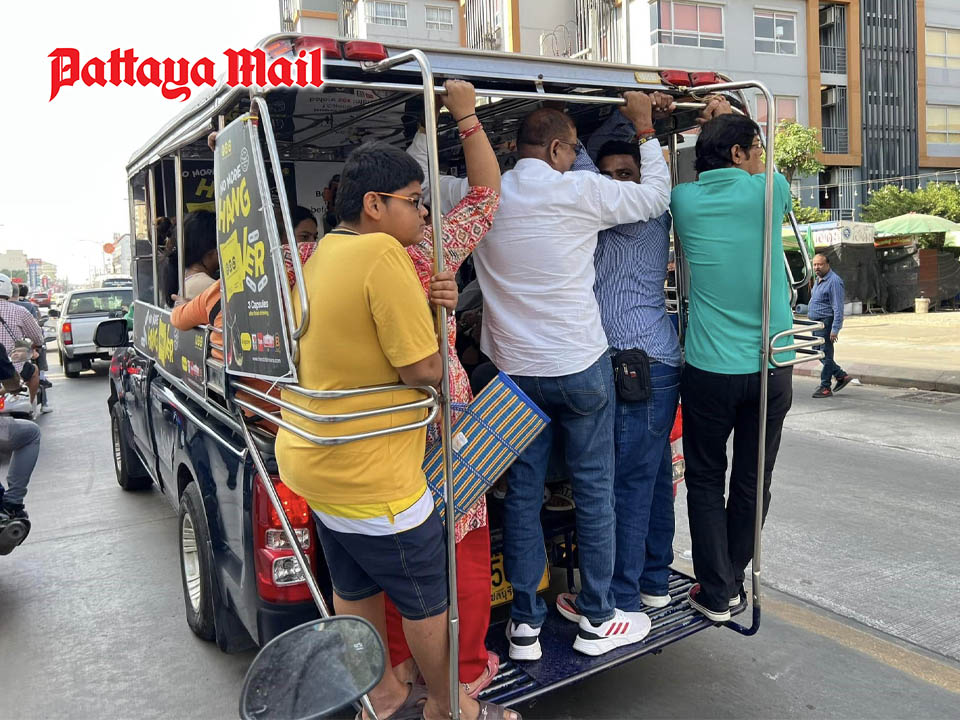
PATTAYA, Thailand – Baht buses, or songthaews, are a cornerstone of Pattaya’s transportation system, offering affordable rides for both locals and tourists. Despite their convenience, the absence of standardized pricing or clear guidelines often leads to confusion, especially for first-time visitors. This raises the question: should there be formal rules governing baht-bus charges?
A recurring concern is the lack of clear pricing signs. One long-time visitor shared their experience: “I’ve been regularly visiting for 10 years now, and I have never once seen a pricing sign for a beach bed. As for baht buses, I give them the right money (20 THB for 2 people) and walk away—no conversations are necessary.”
The challenges surrounding baht-bus charges often seem to peak during Pattaya’s bustling high season, when the influx of tourists can lead to inflated fares and occasional confusion. However, as one seasoned visitor optimistically notes: “It’ll be back to normal in a week when high season is over”.
Another concerned visitor states: “Those beach operators start setting up every morning around 4:00 a.m. For some strange reason local government doesn’t allow them to work on Wednesdays. Not a very pleasant job with little reward. Good on them for making a decent earn over this period. “
For seasoned travelers familiar with Pattaya’s informal norms, this approach works. They know the “unspoken” rules and can navigate the system with ease. However, for newcomers, the lack of clear communication can be confusing and, at times, intimidating. Without signage or established rules, some passengers may feel unsure about the correct fare or worry about being overcharged.
Introducing standardized pricing rules or visible signs could address these issues. Clearly marked fares for popular routes would provide transparency and eliminate misunderstandings. This change could also benefit drivers by reducing disputes with passengers over pricing.
However, it’s important to consider the informal and flexible nature of the baht-bus system. Drivers may rely on their discretion to adjust fares based on the route, time of day, or the number of passengers. Strict rules could limit this adaptability and potentially complicate a system that has functioned smoothly for decades for those familiar with it.
A balanced solution might involve introducing suggested pricing signs at key pickup points while maintaining flexibility for special circumstances. Such measures would ensure fairness, make the service more accessible for tourists, and preserve the efficiency and affordability of this beloved mode of transportation.










